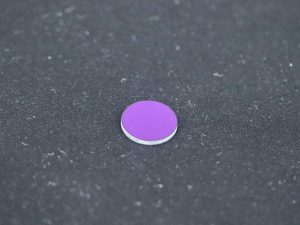In the realm of modern optics, controlling light’s polarization is fundamental for applications ranging from laser systems to quantum devices. Optical waveplates—also known as retarders—are passive optical components specifically engineered to modify the polarization state of light without altering its intensity, path, or coherence. These elements rely on birefringence, a property of anisotropic materials that introduces a controlled phase delay between orthogonal polarization components of an incoming wave.

Optical Waveplate
When linearly polarized light enters a waveplate, the material’s birefringent structure splits the wave into two components aligned with the fast axis and slow axis. These components travel at different speeds, resulting in a phase shift known as retardation. This shift is typically defined in terms of wavelength (λ), degrees, or nanometers.
Waveplates are commonly fabricated from crystalline materials such as quartz, magnesium fluoride (MgF₂), calcite, and sapphire, selected for their high transmission, low absorption, and precisely defined birefringent properties. Quartz remains the industry standard due to its excellent optical clarity and mechanical durability.
Waveplates are categorized based on how they achieve the target phase delay. Here’s a quick breakdown:
Waveplates are critical components in systems that demand accurate control of light polarization. Common applications include:
In high-precision setups, even slight deviations in polarization can degrade performance. Some systems incorporate full-waveplates to correct ellipticity caused by reflective components or imperfect alignment.
Accurate waveplate alignment is critical. For instance, to generate circular polarization, the quarter-wave plate must be rotated 45° relative to the incoming linearly polarized light’s axis. Verification using a polarizer downstream helps confirm whether the resulting beam maintains constant intensity—an indicator of circular polarization.
Optical waveplates provide scientists and engineers with a robust method for tailoring light’s polarization state, unlocking new potential in imaging, communications, metrology, and quantum research. With options ranging from cost-effective multiple-order waveplates to high-performance achromatic versions, selecting the right type and material is key to optimizing system performance.